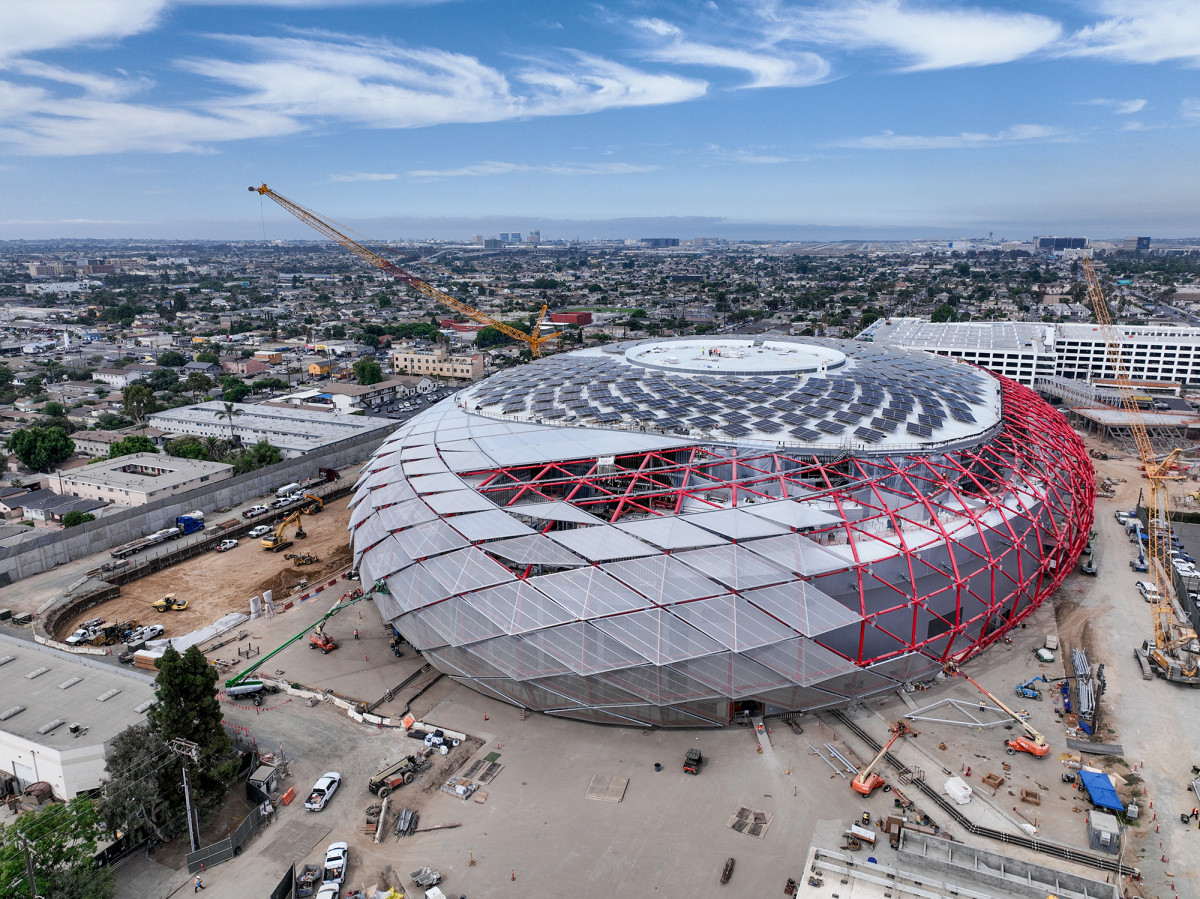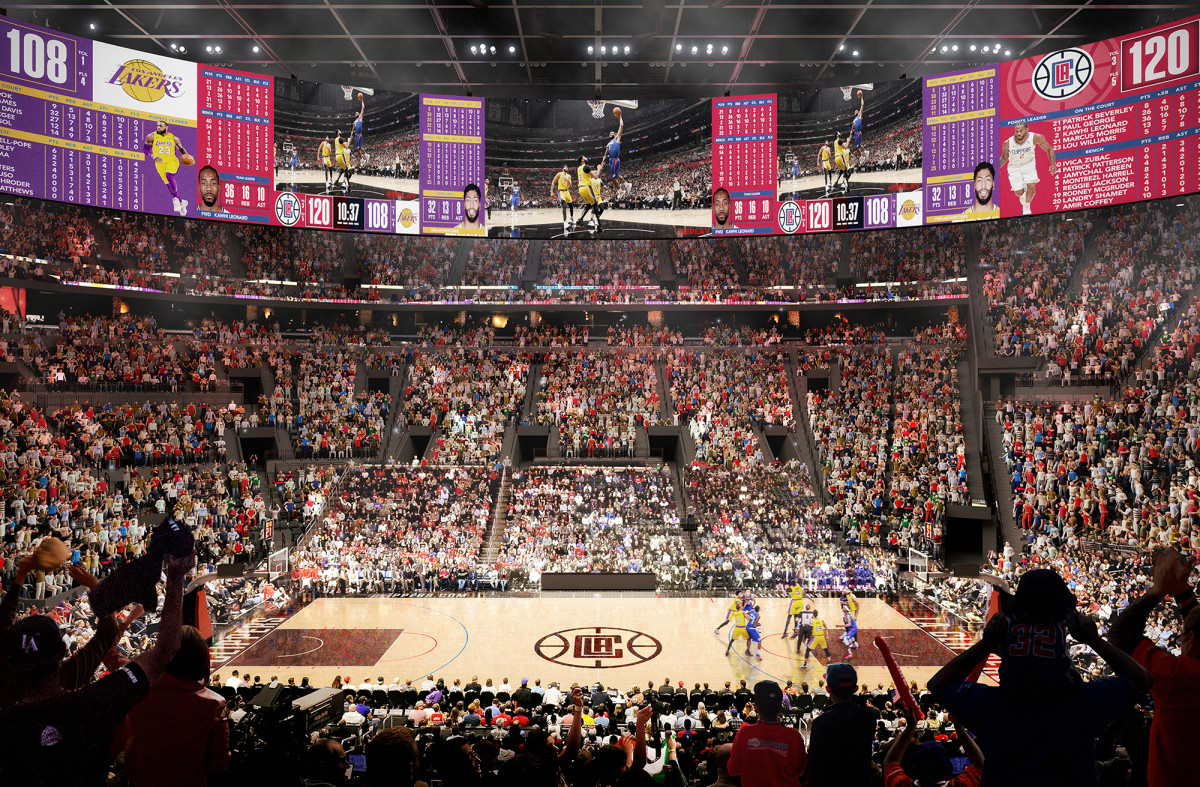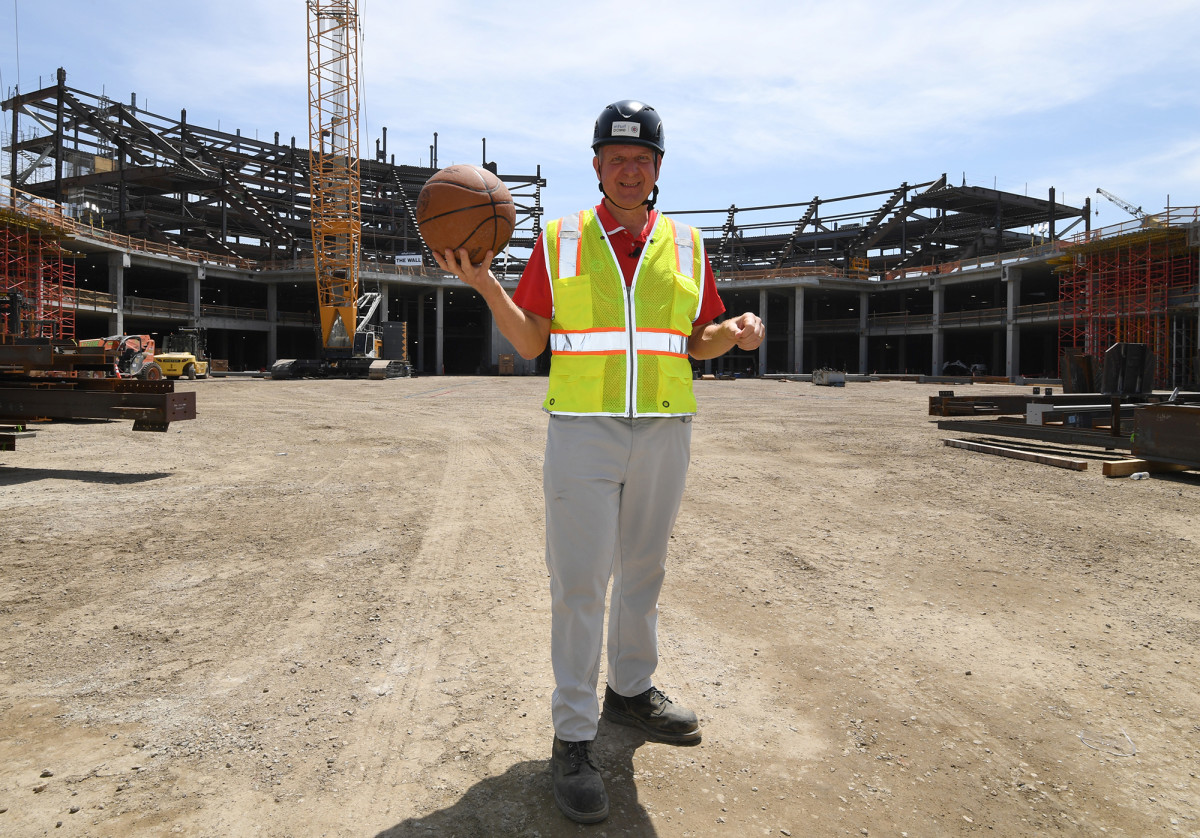How Building an NBA Arena Works: Clippers’ New Home Wants to Keep Your Eyes on the Court

In 1988, Paul Allen, who founded Microsoft alongside Bill Gates, bought the Trail Blazers for $70 million. Seated behind the baseline during games and wearing a boyish grin verging on rapturous, he took great joy in the franchise. So much so that he evangelized sports ownership to his friend and coworker. Steve Ballmer recalls that, again and again, Allen gushed to him, Steve, you gotta buy a team! Steve, you gotta buy a team!
Says Ballmer: “I saw what that meant to him.” Ballmer was too busy to heed Allen’s suggestion, serving, as he was, as CEO of Microsoft. But in 2014, Ballmer retired. Just a few months later, the Clippers came on the block when the franchise’s noxious owner, Donald Sterling, was essentially forced to part with the team.
This was no fire sale. Ballmer paid $2 billion. For the perennially cursed Clippers. Three years after the 76ers had sold for $280 million. And the same year the Bucks sold for $550 million. If this purchase reset the market for NBA teams, so be it. Ballmer had his team.

Over the past decade, odds are good you have seen Ballmer during a game. From his perch—not courtside nor cocooned in a suite but behind the basket, à la Allen, who died in 2018—Ballmer fixes his eyes on the court, overtaxes his larynx and takes it all in... as his phone rests in his pocket. “I try,” Ballmer says, “to be present.”
We take a lot in sports for granted, but the logistics, tech and teamwork behind our favorite games and events all are fascinating. Sports Illustrated's How It Works series goes behind the scenes to find out how it all comes together.
How an F1 Track Works: Turning the Vegas Strip Into a Racetrack
How an NFL Sideline Works: Behind-the-Scenes With the Dolphins
For those few hours from tip-off to the final buzzer, nothing else much matters. Ballmer, 67, can catch up on texts and emails on the postgame flight back to his home near Seattle. The next morning, he can make his calls and have his meetings and go down internet rabbit holes. But during the game, the former tech executive is transfixed. He didn’t buy the team to see and be seen. The return on investment is nice, but when you’re worth in excess of $100 billion, more than any other NBA owner, you’re not in it for the money. Ballmer loves basketball. He loves trying to see his team win. It’s hard for him to imagine going to a game for any other reason.
So it is that when the Clippers, for the first time in franchise history, cease being tenants and play in their own arena, the venue will be built in the owner’s image. Starting next season, the team will end its residency of Crypto.com Arena (né Staples Center) and venture 14 miles south to a new home—just for them—in Inglewood. It doesn’t look like much now—a dusty, bustling construction site Sports Illustrated recently toured, a few blocks from SoFi Stadium and down the street from the Forum, which Ballmer had to acquire from Knicks owner Jim Dolan’s Madison Square Garden Company before he could break ground (long story). Set to open in the fall of 2024, the Intuit Dome will be predicated on presence, the quaint idea that fans should, literally, keep their eyes on the ball.
“There are casual fans, people who are happy to spend time in the bar and occasionally look out at the game. Love them. Great,” says Ballmer. “But we want to put our emphasis elsewhere. This [building] is about being in your seat, being in the bowl, watching the team.”
Let other teams stage their events in entertainment Xanadus, where the games become something akin to background noise, drowned out by on-site sportsbooks, wine-cellared bunker suites, food courts and nonstop diversion. The Clippers’ new joint—a “basketball palazzo,” the owner calls it—will zig where the others zag and emphasize the core product.

To that end, about 5,100 of the Intuit Dome’s 17,500 seats will be a court-level, steeply terraced section known as The Wall, inspired, Ballmer says, by when he visited Kawhi Leonard’s old gym at San Diego State and noted the energy of the student section. The hope is those fans—all but stacked on top of the court—stand throughout the game like Duke’s Cameron Crazies.
The arena will be arrayed with 199 “countdown clocks” throughout the building, nudging fans to find their sets before tip-off and the end of halftime. The building will feature more than 1,000 toilets (twice the NBA per-fan average, according to the Clippers)—yes, to expedite lavatorial needs, but more important, to minimize time spent waiting in line and thus not cheering on the home team. (“The thing I hate most in life is arenas where you have to wait in line for the bathroom,” Ballmer once said. “I’ve become a real obsessive about toilets.”)
But the joint will also be remarkable for what it lacks. Most notably, there will be a paucity of suites, which Ballmer believes drain a building of atmosphere. The 48 traditional suites (compared to Crypto’s 172) that do exist will be consigned to one level, far from courtside. And the Clippers’ president of business operations, Gillian Zucker, had to prevail on the owner to put one video monitor in each suite. If Ballmer had it his way, even the fans in the fancy boxes would have no choice but to watch the damn game.
Likewise, there will be no restaurants at bowl level. Even if California legalizes sports gambling—it’s one of the 12 states that still bars it—there will be no gaming consoles on the seat-backs or in the concourses. Short of demanding fans check in their phones, every design touch is meant to direct focus onto the court.
On the surface, there is a certain irony to all this: The titan of tech is overseeing a building that minimizes distraction and returns to the analog days when fans devote their attention to, you know, the actual games. Ballmer contends it’s more nuanced than that. “I’m not [tech] skeptical,” he says. “But because I come from tech I am probably more sensitive to techifying without a good reason.”
So there will be a 360-degree, 38,375-square-foot scoreboard, The Halo, which wraps around the perimeter and might be the signature feature of the arena. But it’s designed to engage fans in the game. There will be cashierless concession stands that automatically charge fans who can just grab what they want (like Amazon Go stores). The baskets on both ends of the court will rest on elongated backboard arms, to push back the stanchion base and improve sight lines.

Apart from the throwback principles, Ballmer has empirical support for his contention that all these touches are in service of winning. A growing body of social science suggests that fans can impact results. The closer fans are to the playing surface, the greater the effects of the home court advantage. The louder fans are, the more they can influence officials’ calls. This engagement, this presence, matters. Per the man who is spending in excess of $2 billion, privately funded, to build this basketball temple: “At the Intuit Dome, you’re not going to be a spectator; you’re going to be a participant. Your job is to help our guys.”
And besides, Ballmer says, “We need to differentiate ourselves from the Lakers.”
